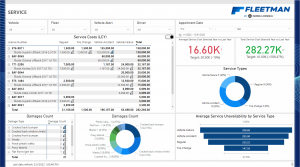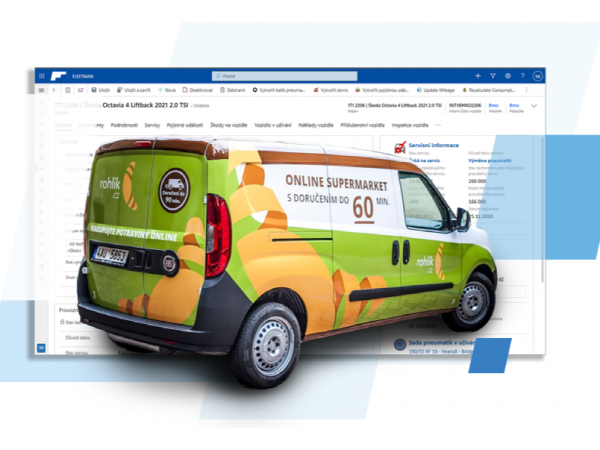← Back to the list of articles
Which vehicle models are more likely to break down? Which ones increase your costs disproportionately? Which drivers send their cars to the workshop more often and why? Only well-structured fleet records can help you answer these questions. Complete data will give you better insight, make reporting easier, and serve as input for finding inefficiencies and further improving operations.
However, more entities such as leasing companies, insurance companies, or service stations are getting involved in fleet management. Their data is often scattered across multiple systems. Bringing them together in one place for a complete overview often means manually transferring data between systems. This in itself is inefficient, creates errors and is not very secure.
That’s why, when developing Fleetman, we focus a lot on so-called integrations – preparing our system to be able to automatically receive data from other systems and work with it. It has the ideal prerequisites for this – the technology on which the application is built is open and connecting with another system is fairly straightforward. It also enables interactive reporting and analysis of operational data both in native dashboards and via integration with Microsoft Power BI.
Servicing is an important item in the vehicle lifecycle. Whether regular or unscheduled in the event of a breakdown or accident. Henceforth, another integration we have focused on is the GT NET service system. This system is used by repair shops to quote price and record activities on order, keep records of parts used, invoicing etc.
GT NET’s primary benefit is the facilitation of communication between workshops, fleet managers, leasing companies and insurance companies. A typical situation could be a regular service. This can take place as follows:
- The car user (driver) sees that the car requires servicing, e.g. after a certain mileage.
- He calls the phone number he received from the leasing company. The call centre of the GT NET partner, e.g. LKQ, will book the customer at the contracted partner service. At the same time it creates a service event in GT NET.
- The receiving technician uses GT NET to estimate the service action. An itemized list of parts and service activities is created. He can also attach photo documentation and share the proposed service with the fleet manager, the leasing company or the insurance company via GT NET. During the service event execution the estimates can be adjusted according to any comments or new facts during the job.
- After the service has been carried out, the customer’s fleet manager, the leasing company and, if applicable, the insurance company will find a detailed account of the service intervention in GT NET, with all parts used, actions and photo documentation.
How is the integration with Fleetman beneficial for fleet managers?
GT NET is a source of valuable data for the fleet management system about the operation of the car. Specifically:
- Data on scheduled and performed services.
- Service cost and labor estimates
- Photo documentation, e.g. damage to the car
- List of services and parts used
- Service invoicing
Thanks to this add-on, these valuable data are now automatically downloaded from GT NET to Fleetman at set intervals. There they are displayed in a 360 view of the vehicle and can be further used, e.g. to analyze the fleet service costs in different views.

Power Bi dashboard in Fleetman
Prior to the integration, our customers were forced to either keep records separately in GT NET (and therefore lack complete picture of the vehicle and its operation in either system), or export data from GT NET and manually store it in Fleetman. This is now eliminated thanks to the “GT NET Integration” add-on. The add-on is available for both new and existing customers. To operate it, the leasing company must use GT NET.
Fleet management with Fleetman thus becomes more practical and easier again. And therefore smarter.




